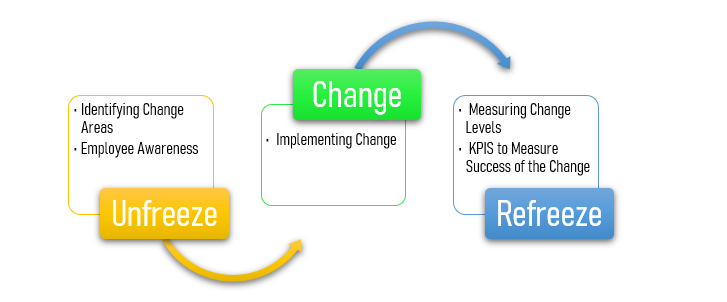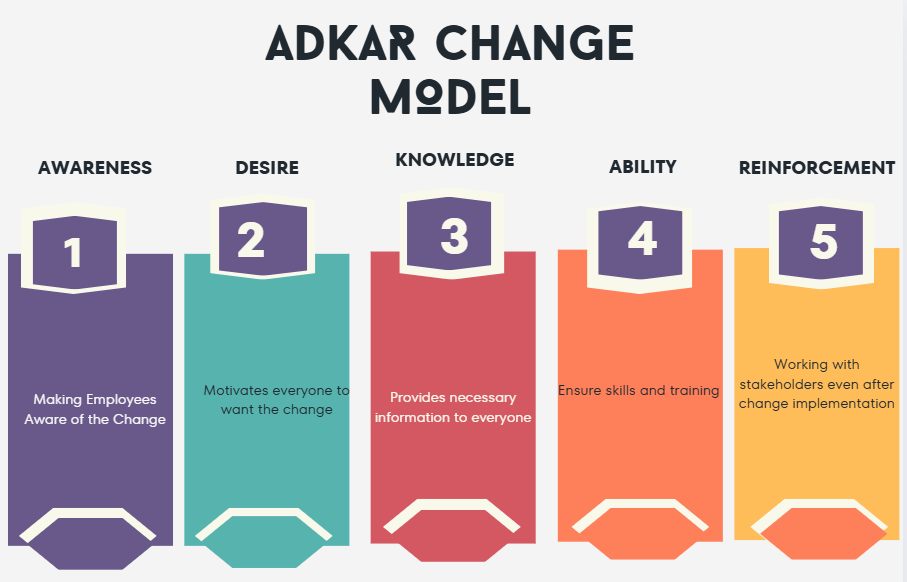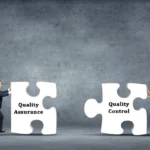An ever-evolving business landscape always keeps organizations on their toes, compelling them to adapt to change whenever required. But navigating change and adapting to it is a tough nut to crack. Technological advancement, cultural shifts, restructuring, leadership movement, and many other factors drive organizational transformation.
Holding onto the market position or even exceeding expectations in product or service delivery requires businesses to transition to a model that best suits the change. Change management models are designed to help organizations navigate change in an effective and profitable manner to thrive in the competitive business environment.
What is Change Management?
Successful management of change is extremely crucial for organizations to survive and sustain their market position in the modern-day competitive business world. Given this concept of change management, one question can come to your mind – “Why there is a need to manage change?”
Whether you are a business leader, an executive, a project leader, or any other manager type, you must have experienced a general tendency of employees to resist change. This is where the need to manage change comes into play. Through comprehensive change management strategies, organizations can eliminate this resistance and lead to change effectively. Change management models help break through internal and external barriers of an organization in adopting a change, facilitating a systematic approach to managing change.
Top 10 Change Management Models
Here are the top 10 change management models that can help your organization navigate change smoothly-
-
Lewin’s Change Management Model
In 1947, Kurt Lewin proposed a three-step change management model that denotes the step-by-step movement of an organization from the current state to the unknown state. Unfreezing, Changing, and Refreezing are the three stages that leaders adopt to help employees navigate the change.
- Unfreeze: This is the early stage of this change management model, where areas demanding change are identified. Employees are made aware of the upcoming change and what they can expect from it at this stage.
- Change: This is the stage when you implement the change and keep communicating about it with the employees involved in the change process.
- Refreeze: In this final stage, change management metrics are measured, and KPIs are determined to identify the success rate of the change.
-
McKinsey 7-S Model
This seven-staged change management model is highly adopted by organizations while implementing complex and broad changes. The seven components of this model are not addressed individually. Rather, their effect on each other is measured to identify barriers to change-
- Strategy: Strategy is what an organization intends to implement and wants to be more competitive.
- Structure: This helps determine the structure of an organization, whether it is a flat or a hierarchical structure, to ensure change is implemented accordingly.
- Systems: Involve formal processes and tools to execute change, such as technology systems, budgeting, and others.
- Shared Values: Core beliefs and values of a business that guide the decision-making and organizational behavior to ensure a smooth change.
- Skills: Employee competencies and abilities to adapt to change successfully.
- Style: It is the leadership style and management approach within a company. Gaps in the style can help bring changes in the approach as per the change requirements.
- Staff: This includes the number of employees, their roles, and delegations across various functions. Changes in staff number and behavior are done to embrace a new change.
Among the seven elements, strategy, structure, and systems are referred to as “hard” elements, and the remaining ones as “soft” elements. Hard elements are easy to identify, and soft elements are difficult to identify. By keeping these seven elements in harmony, organizations can adapt to changes without any hindrance.
-
Kotter’s 8-Step Change Model
John Kotter proposed this 8-step change process to help businesses manage and implement change. This change model focuses mainly on people involved in the change and their mindset in driving change. The steps include-
Step 1: Creating a sense of urgency among people about the change
Step 2: A change team is built with leaders and change agents from various departments
Step 3: Defining strategic vision
Step 4: Communicating to each one involved in the change process
Step 5: Identifying barriers
Step 6: Creating short-term goals to break the change management plan
Step 7: Keep up with the speed of throughout the process
Step 8: Maintaining changes after completion
-
Nudge Theory
Nudge theory is an evidence-based approach that nudges employees in the direction of the desired change. It believes nudging change is more effective than enforcing change directly. This theory focuses on influencing employees’ mindsets to motivate them to adapt to the change. The principles involved are-
- Defining change
- Showcasing the benefits that the change will bring to the employees
- Involving their point-of-view
- Recommending change rather than commanding them to adopt the change
- Prioritizing employee feedback throughout the process
- Solidifying change with small wins
-
ADKAR Change Management Model
Jeffrey Hiatt created the ADKAR change model by focusing on the people behind the change. Similar to the Nudge theory, this change model also gives value to employee involvement. Businesses opting for a technology implementation would benefit from this model. This bottom-up method comprises five goals; each letter representing one goal-
- Awareness: Makes sure every organizational member is aware of the change
- Desire: Motivates everyone to want the change
- Knowledge: Provides necessary information to everyone, helping them accomplish their role in the change process
- Ability: Ensure skills and training required for employees to have
- Reinforcement: Continue working with stakeholders and employees after implementing the change
-
Bridges Transition Model
William Bridge’s Bridges Transition Model focuses highly on the emotional transition of people involved in the change process while the change occurs. In order to help organizational people deal with emotional changes, this change model points out three stages-
- Ending, losing, and letting go: Resistance to change
- Neutral Zone: Stuck in between letting go of the old state and embracing the new
- The New Beginning: Entering the stage of acceptance after implementation is done
-
Kübler-Ross change curve
The Kübler-Ross change curve is based on human psychology, mainly used to treat the process of dealing with loss. However, it can be applied to various change experiences to help employees better navigate transitions. Organizations going through a radical change can handle employee responses better through this model, preventing employees from experiencing any worse emotions. This change model encompasses five emotional phases that employees experience while executing a big change-
- Denial: Denial is the stage where people refuse to accept any jolt, leading to resistance.
- Anger: Changes often seem unwanted to people, including employees. This sudden enforcement of change evokes anger naturally.
- Bargaining: In this stage of the curve, people try to avoid accepting the change by pushing for a compromise.
- Depression: Employees often enter into a stage of depression if they are not happy with the change.
- Acceptance: Leaving with no option, employees eventually reach the stage of acceptance.
-
Satir Change Model
Crafted by therapist Virginia Satir, the Satir Change Model generally focuses on the change experiences of families but can also be applied to businesses. The stages of this change model include-
- Past Status Quo: The past state before the change occurred
- Resistance: Natural response of resistance while being exposed to the change
- Chaos: A chaotic situation occurs when the change first gets implemented, and employees are still struggling to adapt.
- Integration: Gradual acceptance starts commencing
- New Status Quo: Employees finally settle to the new status quo
-
Maurer Resistance and Change Model
This change model is designed to identify the causes behind the failure of a change initiative, focusing on three resistance levels-
“I Don’t Get It”: Lack of information and confusion with the available data creates general resistance among employees.
“I Don’t Like It”: This resistance is emotion-based, driven by fear of losing position, status, or control. This deep-rooted resistance affects communication and decision-making.
“I Don’t Like You”: This creates a disliking feeling for the organizational leader due to negative experiences. Leaders failing to address this concern can lose out people’s support in driving the change.
-
PDCA or Deming Cycle
Deming or PDCA cycle focuses on process improvement through four stages while implementing a change. Developed by Dr. Williams Edwards Deming, this change model emphasizes continuous improvement and drives organizational change.
- Plan (P): In this process, organizations identify the need for change and state clear objectives to achieve that goal. A detailed change management plan, along with details of resources, budget, and timeline, is produced in this phase.
- Do (D): The change management plan is implemented in this phase, and the progress is monitored.
- Check (C): The impacts of the change and its progress are evaluated by monitoring the KPIs. The effectiveness of the change is understood in this stage.
- Act (A): Improvements are made in the process depending on the findings of the ‘check’ stage. By integrating successful changes, the Act stage ensures continuous improvements by eliminating challenges and issues.
All these change models address change in different manners, with a common purpose of eliminating resistance and embracing transitions for organizational well-being. Depending on their organizational structure, business model, and type of change they are adopting, organizational leaders must choose a suitable one from the lot. No matter what changes your business espouses, these top 10 change management models can efficaciously help you penetrate the complexities of resistance and embrace transitions.












